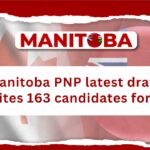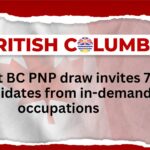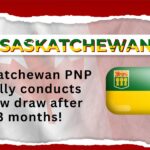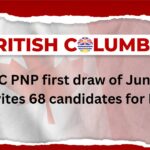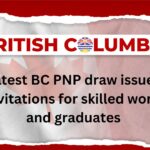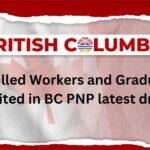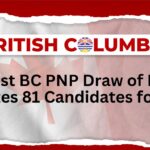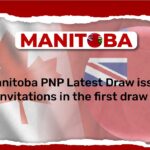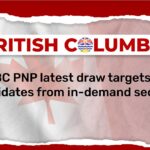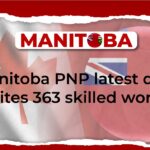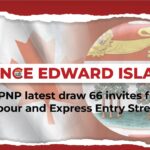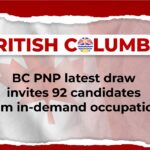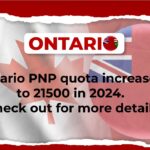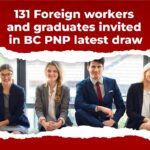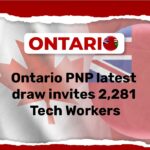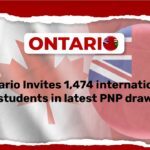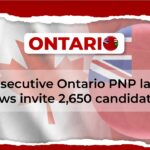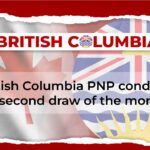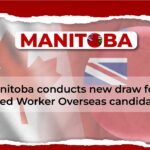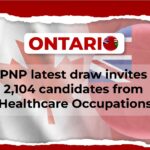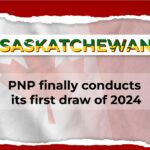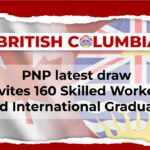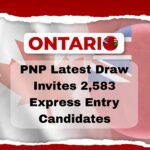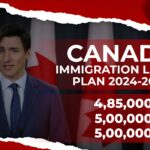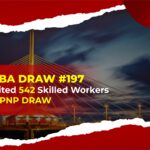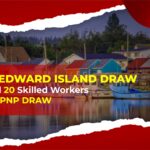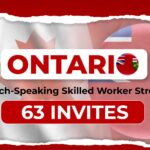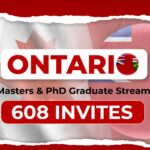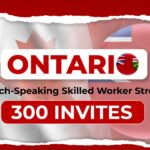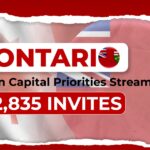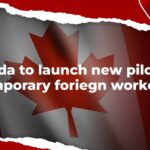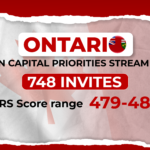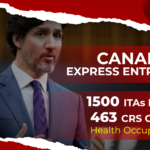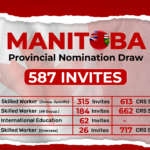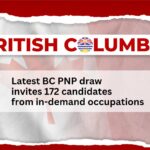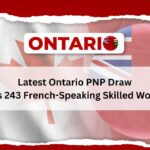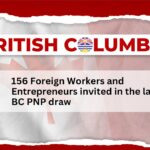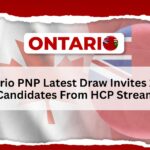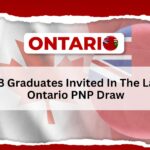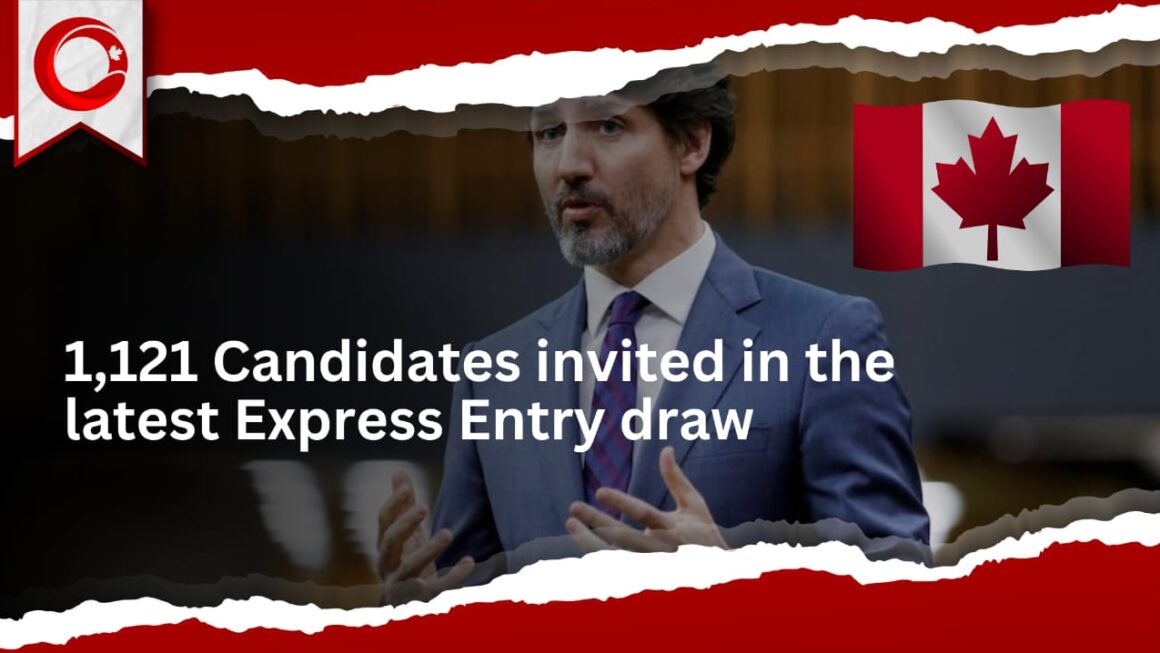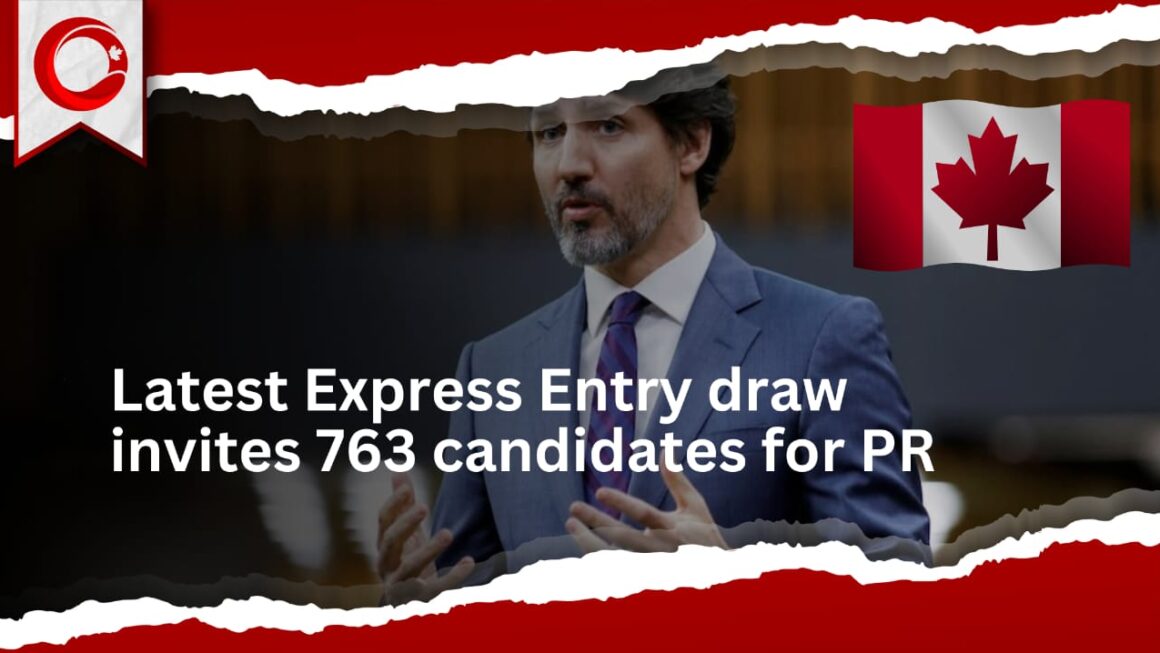Table of Contents
- 1,613 Express Entry Candidates Invited
- Understanding the Express Entry System
- The Role of Provincial Nominee Programs (PNPs)
- Key Details of the PNP-Specific Draw
- Key Details of the PNP-Specific Draw
- Why PNP Draws Are Important for Immigration
- How PNP-Specific Draws Benefit Candidates
- Breakdown of Popular Provincial Nominee Programs
- Steps for Candidates Interested in PNP Draws
- Final Thoughts
1,613 Express Entry Candidates Invited
Canada’s Express Entry system continues to serve as an essential route for skilled workers to achieve permanent residency (PR), with the latest draw inviting 1,613 candidates under the Provincial Nominee Program (PNP). This PNP-specific draw highlights the importance of provincial immigration streams and the role they play in addressing labor shortages across Canada. For those following the country’s immigration trends, this invitation is a significant milestone, offering more opportunities for candidates with specific skills to integrate into Canada’s workforce.
In this blog, we will take a detailed look at the significance of this draw, the workings of Express Entry and PNP, and what candidates should keep in mind as they navigate the system.
Understanding the Express Entry System
The Express Entry system was introduced in 2015 to smooth the process of selecting skilled workers for immigration to Canada. It is a points-based system designed to manage applications for three major federal immigration programs:
- Federal Skilled Worker Program (FSWP)
- Federal Skilled Trades Program (FSTP)
- Canadian Experience Class (CEC)
Candidates enter the Express Entry pool by creating an online profile and are awarded points based on the Comprehensive Ranking System (CRS). The CRS takes into account factors such as age, education, language proficiency (English and/or French), work experience, and adaptability. Each Express Entry draw has a cut-off score, and only those candidates who meet or exceed this threshold receive an Invitation to Apply (ITA) for permanent residency.
The Role of Provincial Nominee Programs (PNPs)
The Provincial Nominee Program (PNP) allows provinces and territories in Canada to nominate individuals who meet their specific economic and labor market needs. Each province sets its criteria for nomination, usually tailored to fill labor shortages or attract workers with particular skills. The key advantage of being nominated through a PNP is the additional 600 CRS points that are awarded to the candidate, practically guaranteeing an ITA in a subsequent Express Entry draw.
PNP streams are typically aligned with the federal Express Entry system, enabling provinces to search the pool of candidates and invite those who meet their unique requirements. There are also non-aligned PNP streams that operate independently from Express Entry, but alignment with Express Entry is the more popular way due to the significant boost it provides to CRS scores.
Key Details of the PNP-Specific Draw
On the date of the most recent draw, 1,613 Express Entry candidates were invited through a PNP-specific draw. This means that all the invited candidates had received provincial nominations, which elevated their CRS scores by 600 points. PNP-specific draws often have lower CRS cut-off scores compared to all-program draws, making them an attractive option for candidates with ties to particular provinces.
Here are the key takeaways from this latest PNP-specific draw:
Number of Invitations: 1,613
CRS Cut-off Score: Typically higher for PNP-specific draws due to the additional 600 points from provincial nominations, this draw likely had a cut-off in the range of 700-800 points.
Categories of Candidates: Skilled workers with a provincial nomination, covering a wide range of occupations and industries.
This draw highlights the importance of the provincial route in Canada’s immigration system and the country’s need for talent across various regions.
Why PNP Draws Are Important for Immigration
Provincial Nominee Programs play a pivotal role in meeting the specific labor market needs of Canada’s provinces. Each province faces its own set of economic challenges and labor shortages, which can differ significantly depending on geography, industry focus, and demographic factors. By allowing provinces to nominate individuals directly, the PNP system ensures that immigrants who are invited have skills that are highly sought after in that particular region.
For example, provinces like British Columbia and Ontario may focus on tech and healthcare professionals, while provinces like Saskatchewan and Manitoba may prioritize workers in agriculture, manufacturing, and trades. This approach not only helps the provinces meet their labor demands but also ensures that newcomers have the opportunity to integrate into the local economy quickly.
How PNP-Specific Draws Benefit Candidates
PNP-specific draws are a significant advantage for candidates who may not otherwise qualify for an ITA in an all-program Express Entry draw due to lower CRS scores. Here’s how the PNP system benefits candidates:
- Increased Chances of Receiving an ITA: The 600-point CRS boost that comes with a provincial nomination virtually guarantees that a candidate will receive an ITA in the next Express Entry draw. This is especially important for those whose CRS scores are below the cut-off for all program draws.
- Regional Focus: Candidates who have ties to a specific province (such as job offers or family connections) have a better chance of receiving a nomination. Provinces often prioritize candidates who demonstrate a genuine interest in living and working in their region.
- Variety of Streams: Most provinces offer multiple streams under their PNPs, each tailored to different skill levels and industries. Whether you’re a skilled tradesperson, tech professional, healthcare worker, or entrepreneur, there’s likely a stream suited to your qualifications.
- Tailored Criteria: Provinces can set their criteria based on their specific economic needs, meaning that even candidates with niche skills or moderate CRS scores can secure a nomination if their skill set is in high demand in that province.
Breakdown of Popular Provincial Nominee Programs
Let’s look at a few key provinces and their popular PNP streams that frequently invite candidates through Express Entry-aligned PNP draws.
1. Ontario Immigrant Nominee Program (OINP)
Popular Streams:
- Human Capital Priorities Stream (focused on skilled workers)
- Tech Draws (for technology professionals)
- Skilled Trades Stream (for workers in skilled trades)
Ontario is one of the most popular destinations for Express Entry candidates due to its huge economy and diverse job opportunities. The province frequently conducts tech-focused draws to address labor shortages in the technology sector.
2. British Columbia Provincial Nominee Program (BC PNP)
Popular Streams:
- Skills Immigration Stream
- Tech Pilot (for in-demand tech professionals)
- Healthcare stream (for medical professionals)
British Columbia is known for its huge tech industry and a growing need for healthcare workers. The province’s PNP draws regular focus on these sectors, making it an ideal destination for professionals in these fields.
3. Alberta Immigrant Nominee Program (AINP)
Popular Streams:
- Alberta Express Entry Stream (for candidates with strong ties to Alberta)
- Alberta Opportunity Stream
Alberta’s economy is driven by industries like agriculture, energy, and manufacturing. The province often selects candidates with lower CRS scores, making it an attractive option for those who might not meet the cut-off in other provinces.
4. Saskatchewan Immigrant Nominee Program (SINP)
Popular Streams:
- Express Entry Stream
- Occupations In-Demand Stream
Saskatchewan frequently invites candidates with experience in occupations that are in demand within the province. It is an appealing option for skilled workers in agriculture, engineering, and manufacturing.
Steps for Candidates Interested in PNP Draws
If you’re a skilled worker hoping to be invited through a PNP-specific Express Entry draw, here are the steps you should consider:
- Create an Express Entry Profile: To be eligible for PNP-aligned streams, you need to first create a profile in the Express Entry system. Make sure to meet the minimum requirements for one of the federal immigration programs (FSWP, FSTP, or CEC).
- Research Provincial Programs: Each province has its own set of criteria and streams, so research which provinces align with your skills, experience, and job market needs. You can apply directly to the provincial immigration authorities for a nomination.
- Express Interest in Specific Provinces: In your Express Entry profile, indicate the provinces you are interested in. This increases the chances of being noticed by provincial immigration authorities.
- Monitor Provincial Draws: Keep an eye on the provincial draw schedules and criteria changes. Many provinces release periodic updates on their immigration priorities, which can help you target your applications.
- Apply for a Provincial Nomination: If a province expresses interest in your profile, you will receive a Notification of Interest (NOI). You can then apply for the provincial nomination, and if approved, you will receive 600 additional CRS points.
Final Thoughts
The invitation of 1,613 candidates across the latest PNP-specific Express Entry draw underscores the importance of Provincial Nominee Programs in Canada’s immigration system. PNPs not only fill regional labor market needs but also provide crucial directions for candidates who may not have high enough CRS scores to succeed in all-program draws. For skilled workers around the world, these provincial streams offer a promising opportunity to secure permanent residency and build a successful future in Canada.
If you’re considering a move to Canada, keeping an eye on PNP-specific draws and understanding how the system works can significantly improve your chances of being invited to apply for permanent residency.


